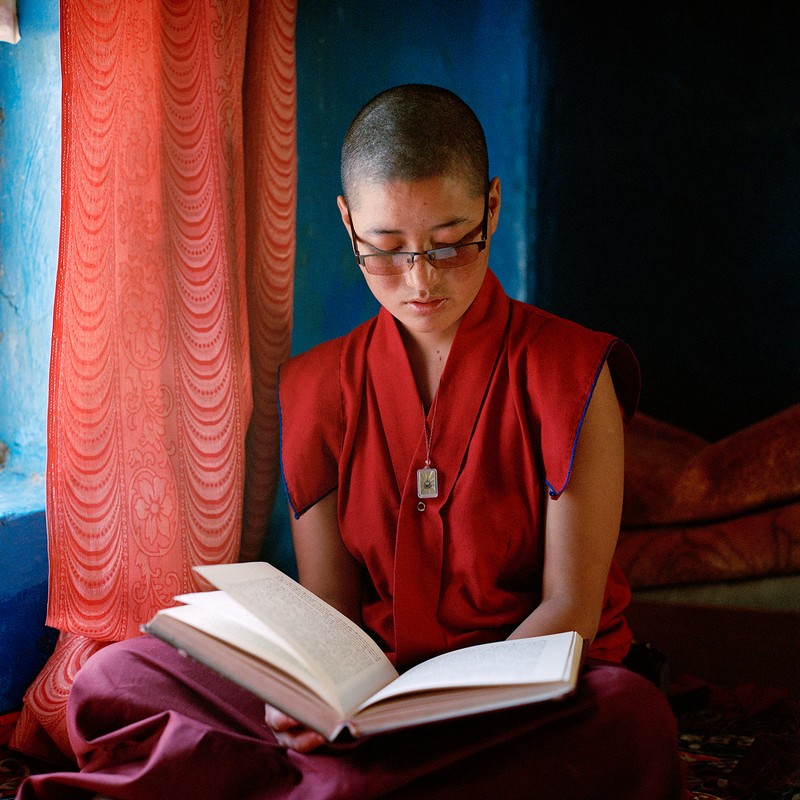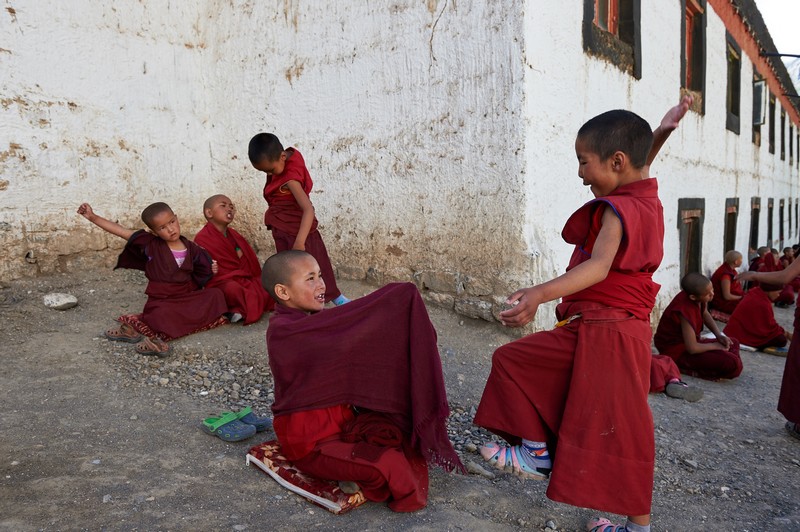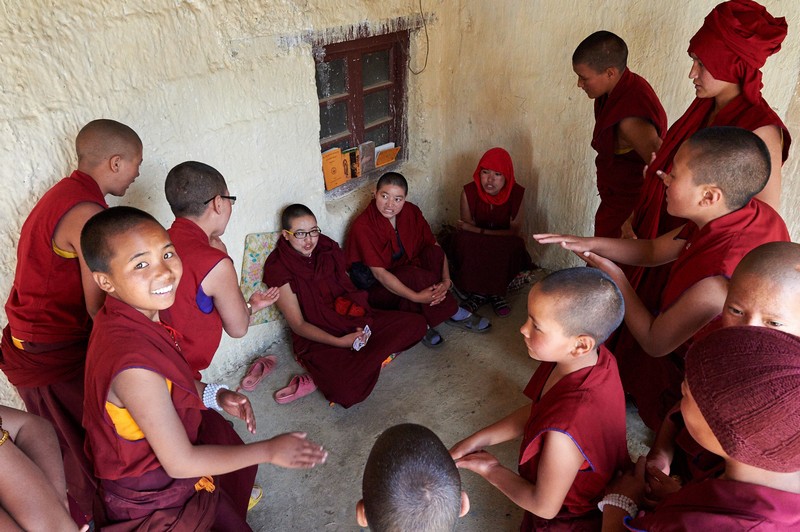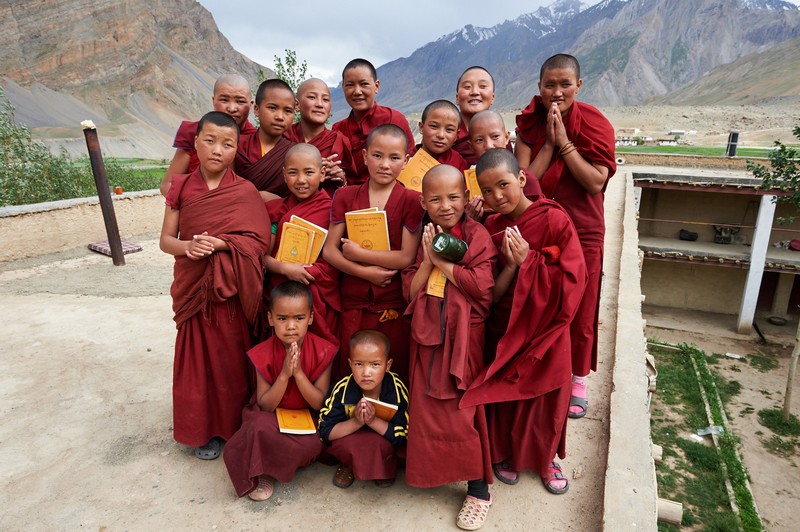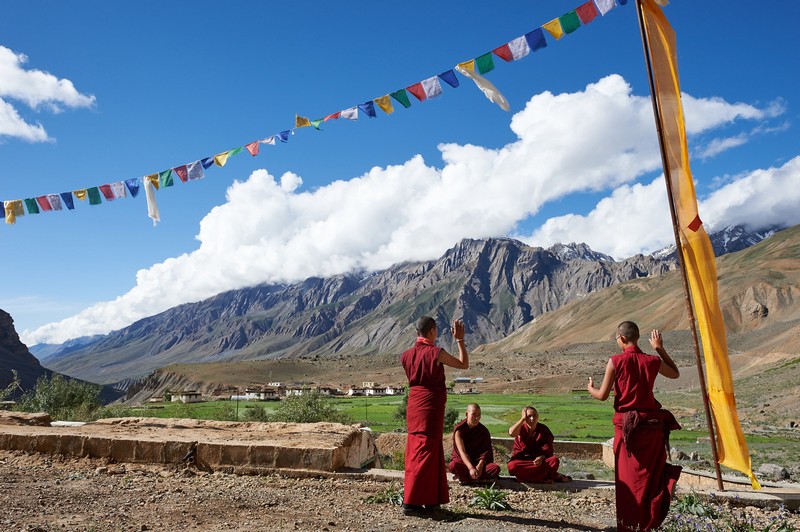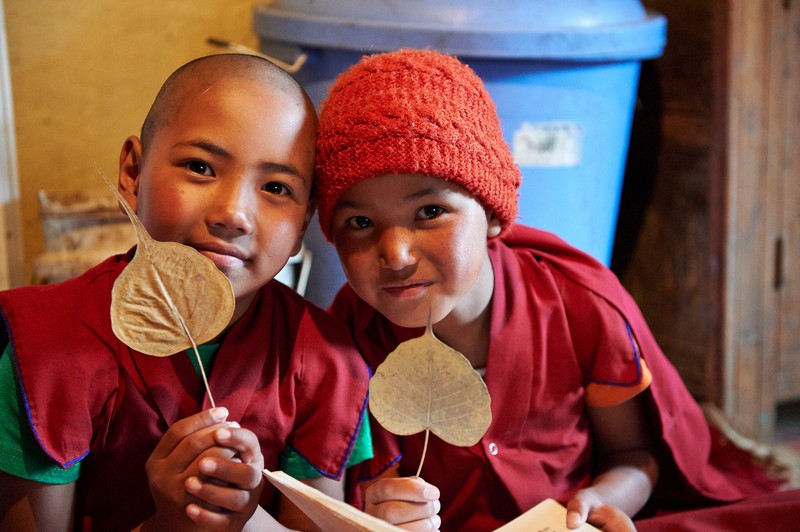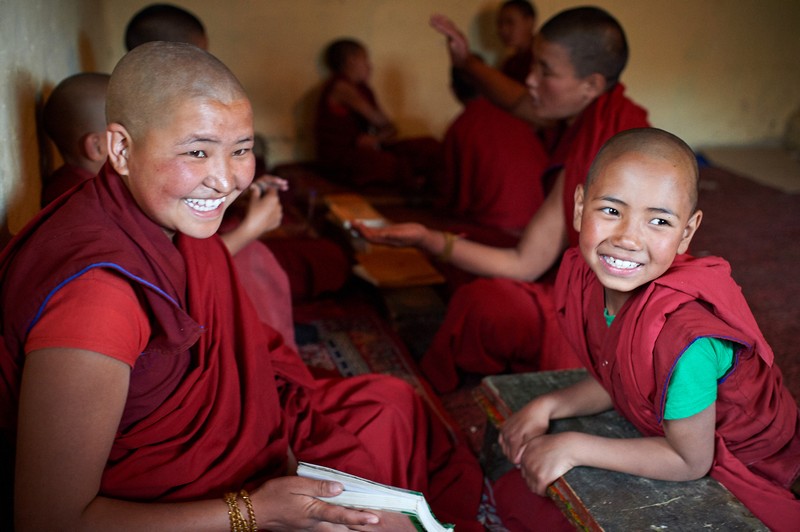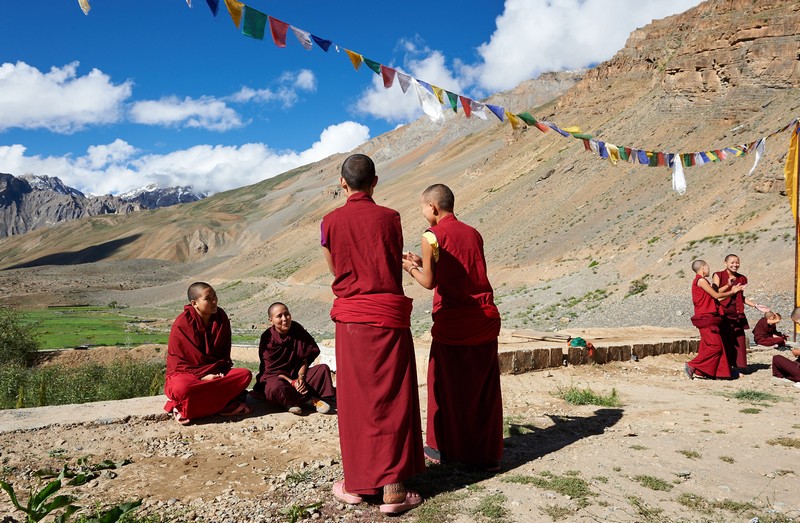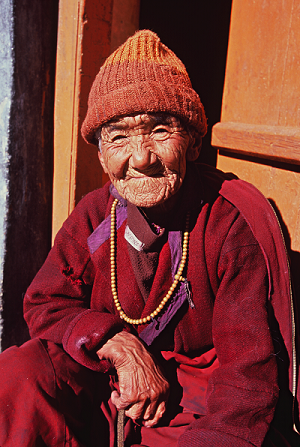Programs: Himalayas
In the Indian Himalayas, there are currently twelve Jamyang Foundation study programs: nine in Zangskar (Jammu & Kashmir), two in Spiti (Himachal Pradesh) and one in Kinnaur (Himachal Pradesh).
Kinnaur
Jamyang Foundation supports education programs for the nuns of Jampa Chöling Monastery, located far in the mountains in the village of Meeru. In 2006, the nuns received a donation from the Private Office of H.H. Dalai Lama and were able to build two more rooms. Since the spring of 2007, many young nuns have joined the monastery. The peace and serenity of the mountains are very conducive to study and meditation. Many more young women would like to join, but due to a lack of facilities, this is not possible at the moment.
Spiti Valley
Two Jamyang Foundation schools are located in the snowy land of Spiti, a desolate region surrounded by high Himalayan peaks. Yangchen Choling is located in the village of Pangmo. Dechen Choling is located in Pin Valley. Life is arduous in Spiti, especially during the frozen winter months.
Due to heavy snowfalls, transport and communications to the Himalayan region are impossible much of the year. Economic hardship, particularly disruption of the wool trade from occupied Tibet, has led the men of Himalayan areas to seek jobs in Indian cities. Women now shoulder a heavy responsibility for both family and livelihood
Intense cold and high winds prevail outdoors, so handicrafts and Buddhist practice – meditation, teachings, and prayer – are favorite winter activities. The solace of these spiritually-enriching activities helps offset the sufferings of the harsh environment.
Traditionally women's work has centered around the home – spinning, knitting handcrafted clothing, and caring for the family, animals and fields. Women's education and spirituality have also centered around the home. Buddhist culture has flourished here since the 8th century, but there has never been a traditional learning center for women.
Thank you Olivier Adam for providing these beautiful photographs!
Traditional values are still strong in this area, which has been home to a unique Buddhist culture for over 1000 years. Loving kindness and care for the young, old, and infirm has been the core of women's spiritual practice over the centuries. Rarely, however, have women emerged as spiritual leaders, due to a lack of educational opportunities.
With the Tibetan border now sealed and access to their cultural heartland denied, the threat of cultural extinction in the Himalayan region looms large. Social and economic changes seriously endanger traditional values. It is now more urgent than ever that women be granted equal social and educational opportunities.
The work of establishing schools has not been easy for the women of the Himalayas. Plagued by poverty, they face many social and personal obstacles. Gradually, however, through sheer determination, these obstacles are being overcome.
There are now two Jamyang Foundation projects in Spiti, Yangchen Choling Monastery and Dechen Choling Monastery. An additional project, Sherab Choling Institute in Morang, is now self-sufficient.
Zangskar Valley
Since 1988, Jamyang Foundation has provided support to nuns’ monasteries in Zangla, Pishu, and Karsha for food, books, teachers, robes, and various construction projects. Gradually, we expanded our support to all the nuns’ monasteries in the region, providing women with the opportunity to live a monastic life with time for the study and practice of the Dharma – an opportunity they greatly appreciate.
Jamyang Foundation currently supports nine monasteries in Zangskar. Prior to 1988, very few of the nuns had the chance to attend school. In the last 20 years, however, more schools have opened and these days most parents want their children to get an education. Women who are keenly interested in Dharma, however, prefer to receive a traditional monastic education. Now all the nuns are competent in Tibetan and enjoy reading Buddhist texts.
The Ladakh Nuns Association (LNA) visited eight monasteries for nuns in Zangskar in 2002. Much of the information here is taken from their survey. Although there have been many changes since then, mostly improvements, this information about the lives of nuns in Zangskar at that time is very valuable. Read about the Nuns of Zangskar and then click the links below to learn more about each of the monasteries and the intrepid nuns who built and preserve them.

